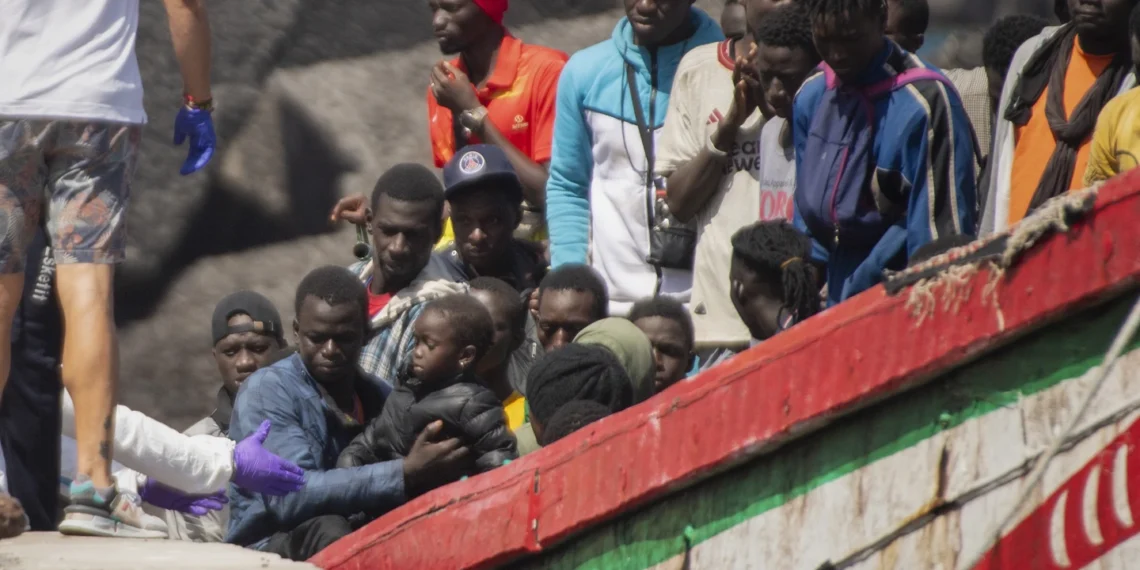Migration to European Union countries dropped significantly in the first eight months of this year, as anti-immigration rhetoric heated up and violence against migrants increased across the continent.
Far-right political parties, promoting strict immigration policies, have gained traction in several elections, most notably in eastern Germany.
According to the United Nations International Organization for Migration (IOM), irregular crossings at the southern borders of the EU decreased by 35% between January and August this year.
Nearly 115,000 migrants have entered the EU through Mediterranean and Atlantic routes during this period, a notable drop from 176,252 in the same timeframe last year. This figure is also a far cry from 2015 when over a million people fled conflict in Syria and entered the EU.
The EU’s border and coast guard agency, Frontex, supports this data, noting a 39% decrease in unauthorized crossings at southern borders compared to 2023.
“The emergency is not about numbers this year, nor was it last year,” Flavio di Giacomo, spokesperson for the IOM’s Mediterranean office, said in a statement.
Camille Le Coz, a senior expert at the Migration Policy Institute, noted that irregular migration continues to receive more attention than it merits. She said, “There are far more pressing issues in Europe, such as climate change, that are being overshadowed.”
The most frequently used route for migrants attempting to reach Europe remains the Central Mediterranean, with many migrants traveling from North Africa to Italy.
However, this year has seen a sharp decline in arrivals, with 64% fewer migrants landing in Italy compared to the same period last year.
This drop is largely due to EU-supported crackdowns in Tunisia and Libya, though these measures have come at a human cost, with migrants often being rounded up and left stranded in the desert.
Nevertheless, smugglers are quick to adapt, and experts warn that the decrease in numbers may not be permanent. In the Eastern Mediterranean, smugglers are increasingly using speedboats to evade authorities, with many now targeting islands further from the Turkish coast in the Aegean Sea. Greek authorities have reported an alarming rise in migrant arrivals by sea, with numbers increasing by 57% this year.
Atlantic Route Sparks Concern
The Canary Islands, located off the coast of West Africa, have seen the steepest rise in migrant arrivals. More than 25,500 migrants, primarily from Mali, Senegal, and other West African countries, have reached the islands this year, marking a dramatic increase.
This route, the third-most commonly used, has proven particularly deadly. The perilous journey across the Atlantic Ocean exposes migrants to strong winds and powerful currents, with many boats capsizing before reaching their destination.

Tragically, numerous migrant vessels have been discovered drifting far from Europe, with the remains of passengers aboard. Bodies of Malian, Mauritanian, and Senegalese migrants have been found as far as the Caribbean and off the coast of Brazil.
Though exact numbers are difficult to confirm, the Spanish humanitarian group Walking Borders estimates that more than 4,000 migrants have either died or gone missing along this route in 2024 alone.
In response to the crisis, Spanish Prime Minister Pedro Sánchez has sought to address the root causes of migration from West Africa. During a recent tour of the region, Sánchez visited Senegal, where he and President Bassirou Diomaye Faye signed agreements aimed at curbing migration.
These measures include promoting temporary work opportunities for Senegalese nationals in Spain and expanding vocational training within Senegal. The two countries also pledged to strengthen police cooperation to combat human trafficking and smuggling networks.
READ ALSO: EC Rejects NDC’s Forensic Audit Demand Amid Tensions





















